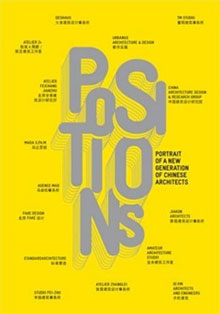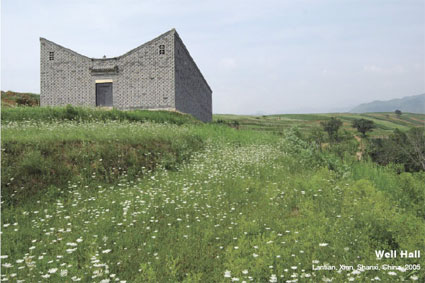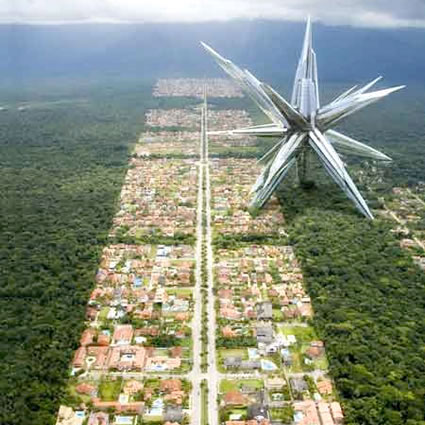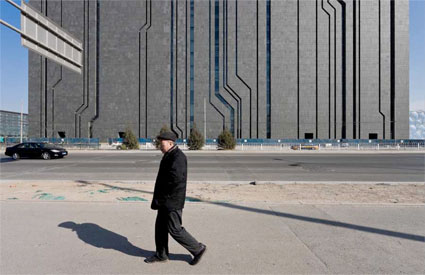 Positions, Portrait of a New Generation of Chinese Architects, edited by Frédéric Edelmann (Architecture Critique) and Françoise Ged (Architect and Director of the Observatoire de l’Architecture de la Chine Contemporaine in Paris.)
Positions, Portrait of a New Generation of Chinese Architects, edited by Frédéric Edelmann (Architecture Critique) and Françoise Ged (Architect and Director of the Observatoire de l’Architecture de la Chine Contemporaine in Paris.)
Publisher Actar says: This book presents over 40 finished works by Chinese architects, produced between 2003 and 2008. A compelling selection representing a new generation of architects in a country whose building rhythm over the last decade has been unstoppable, as China’s architects are making their mark within the backdrop of an avalanche of world class architecture stars.
Featuring works by China Architecture Design & Research Group, Jiakun Architects, Atelier Deshaus, Mada s.p.a.m, MAD, TM Studio, Urbanus, Studio Pei-Zhu, Amateur Architecture Studio, Atelier Feichang Jianzhu, Atelier Z+, Standardarchitecture and Architectural Design & Research Institute Nanjing University.
Contemporary architecture in China has met with a huge amount of coverage in the press. With so many shopping malls, gated communities and high-rise condos mushrooming within its borders, and with such cheap labour force, China has become a mecca for new architectural ideas. We’ve all been admiring photos of the Bird’s Nest, the CCTV headquarters, the Water Cube, etc but every single one of these buildings has been designed mostly by foreign architects. So where are the Chinese architects? Who are they and more importantly what are they doing and building? Do they find inspiration in the heritage of their country or are they more influenced by what they see in the West? Are the spectacular edifices built in Beijing and Shanghai only?
Positions gives some answers to those questions and they are encouraging answers. No pagoda-helmeted builders in sight. Instead, the book showcases dozens of constructions by mega-talented architects and introduces you to 15 of the most accomplished architecture studios. There’s a one page biography and presentation of each practice, along with their contact address, followed by several pages that focus on the most striking works conceived and/or built by the architects.
Here’s a selection of buildings you encounter in the book (i wish i could have added many more but i struggled to find good images of some of the most remarkable edifices online):
 MADA s.p.a.m‘s Hotel Village in the Jade Valley
MADA s.p.a.m‘s Hotel Village in the Jade Valley
MADA s.p.a.m‘s Hotel Village in the Jade Valley is the Shanghai-based architect‘s attempt to establish a vineyard in his childhood village. The house he designed in Lantian is both modern and deeply anchored in Chinese tradition.
 MAD, Super Star_A Mobile China Town
MAD, Super Star_A Mobile China Town
MAD studio has now gained world stardom. Their latest project is the conceptual, star-shaped, mobile Chinatown they are currently exhibiting at the Venice Biennale of Architecture. The new model would be self-sustaining and replace the usual restaurant streets and fake traditional buildings that gives a kitsch image of contemporary China.
 Digital Beijing, by Zhu Pei and UNRBANUS. Photo: Iwan Baan
Digital Beijing, by Zhu Pei and UNRBANUS. Photo: Iwan Baan
One of my favourite building ever is the computer circuitry-inspired Digital Beijing, by Zhu Pei and URBANUS Architecture. The edifice concentrate, during the Olympic Games and afterwards, all the computer systems allowing the control of the smooth running of the Games and subsequently of the Capital.
Inside the book. Slideshow:
See also 0300tv’s five part documentary China According to China.
Related book reviews: The Chinese Dream – A society under construction, by DCF, Neville Mars and Adrian Hornsby and The Concrete Dragon: China’s Urban Revolution and What It Means for the World, by Thomas J. Campanella.







